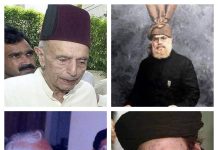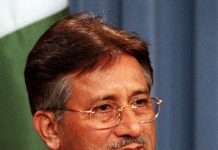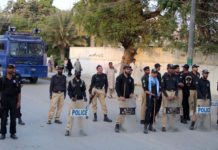By Muhammad Luqman
The general elections in Pakistan on July 25 led to the triumph of right-leaning political party ,PTI (Pakistan Movement for Justice ) and resulted in the elevation of its Chairman Imran Khan to the coveted post of Prime Minister, he had been aspiring for over two decades. Cricketer-turned-politician’s victory has succeeded life- long disqualification and imprisonment of former Prime Minister Nawaz Sharif. The results of the elections provide following takeaways to a common Pakistani.
- Revolution of rising expectations
American writer C.H. Kennedy in his book on Bureaucracy in Pakistan had talked about revolution of rising expectations among people of the South Asian nation at the end of every military government. But this time, it has been ushered by the victory of Imran Khan. This is reflective from the victory of PTI candidates from all the four provinces of Pakistan. PTI will have to come up to the expectations of 17 million Pakistanis who voted for it .
- Changing Balochistan
People from Pakistan’s South Western province of Balochistan fully participated in the elections despite suicide bombing in Mastung district on polling day. Death of over 150 persons in the blast did not deter the people. At the same time, it is challenging situation for the PTI that has to come up to the expectations of the Balochistan, harbouring sense of deprivation vis-à-vis federal government. Participation
- Unlike 1970s, Political divide is not Trans-Indus
Surge of PTI popularity in 2018 does resemble with that of Pakistan People’s Party (PPP) in West Pakistan during country’s first adult franchise based general elections in 1970. This is reflective from the voting trends. But at the same time, PTI , unlike 2013 elections, is not restricted to north Western Khyber PakhtunKhawa province. It has emerged as major political party in Punjab , Sindh and Balochistan too.
- Strong opposition in centre, Punjab
After a long time, the government in the Islamabad and country’s biggest province, Punjab will have to face strong and ferocious opposition as the coalition governments have always problems to take the allies along. PTI that has not emerged as the single largest party in the Punjab, the province home to more than half of South Asian country’s over 200 million population. As it has been able to cobble up a majority with the help of dozens of other parties, it has ample opportunity to form its government. In this scenario, the fear of no-confidence move and political beak-ups will continue to haunt PTI throughout five years term.
- Dynastic Versus Autocratic attitudes
The government of former Prime Minister Nawaz Sharif and even that of PPP were considered dynastic in decision making. But after the victory of Pakistan Tehreek-e-Insaaf, all the decisions regarding the nominations of Governors, Chief Ministers and members of the cabinet are being taken by Imran Khan despite nominal discussions in the Central Executive Committee meetings. So there is no big difference in the decision making structure in Pakistan.















